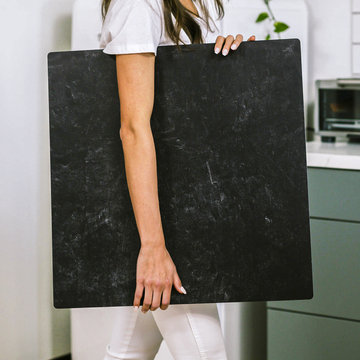Ever scroll past a product photo and instantly get a sense of luxury, coziness, or sophistication? It’s not just lighting or camera gear at work. The background-the surface beneath and behind your item-can quietly shape the way customers feel and even how much they trust what they’re seeing. Most guides focus on colors and patterns, but there’s a deeper layer at play: the subtle science and psychology of surfaces.
It’s time to look beyond the obvious. Let's unlock the secrets of choosing backgrounds that do more than look good-they work hard for your brand, influencing perception, emotion, and sales from the first glance.
The Science Beneath the Surface: Microtexture Magic
Ever notice how some photos look strikingly crisp and others feel soft and inviting? Background microtexture might be the reason. The finish and tiny details on your surface dictate how light plays across your scene.
- Glossy backgrounds like acrylic or polished laminate create bright, sharp reflections. Ideal for high-end, modern vibes, but they’ll also amplify any smudge or stray hair in your photo.
- Matte backgrounds (think soft stone or “Soft Touch” material) scatter light gently, erasing glare and making products appear cozy and accessible-perfect for handmade or natural goods.
The bottom line? Microtexture isn’t just style. It’s a powerful tool to control mood and perceived value, nudging shoppers toward a “buy” without them realizing why.
Color Shift & Metamerism: When Your Product Changes Before Your Eyes
Have you ever looked at your listing and thought: “That’s not the color of my product!”? The culprit might be more than your camera-it could be metamerism, where certain surfaces (especially metallics or pearlescents) subtly shift your product’s hue depending on the lighting.
Here’s how to avoid surprises:
- Shoot your product on your chosen background under daylight, then under your studio lights.
- Check for color consistency-does your item still look the way you want?
- If not, switch to a neutral, matte backdrop or save those color-shifting surfaces for experimental product launches where surprise and uniqueness are an advantage!
Consistency is key to building trust and minimizing returns, especially on marketplaces where what buyers see truly needs to match reality.
Setting the Scene: Backgrounds as Emotional Triggers
The immediate context of your product-the surface and colors around it-sparks emotional associations. This goes far beyond simple branding. It happens in a split second, guiding your customer’s subconscious decision-making.
- Warm wood signals rustic comfort and approachability.
- Cool slate evokes modern sophistication.
- Soft textiles can make jewelry, candles, or cosmetics look inviting and high-end.
Try shooting your product against different backgrounds and watch the mood shift before your eyes. Sometimes, a simple surface swap can make your photos more relatable-or more refined-without extra props or styling.
Go 3D: Multi-Angle and Modular Backgrounds
Flat backdrops have their place, but today’s in-home studios and modular backgrounds bring a new level of creativity. With two or more panels, you can create “corners” or set pieces that add instant depth and professionalism to your photos.
The best part? Position surfaces at gentle angles to catch and shape natural shadow gradients-no fancy lighting necessary. Suddenly, even simple products look dimensional and ready for a magazine cover.
Don’t Forget Sound: Tactile and Sonic Qualities for Video
If you film stop motion, reels, or ASMR product moments, the type of background you use matters more than you think. Hard surfaces like acrylic “click” and “tap” warmly under glass or ceramics, while textiles or silent matte panels offer a muted, luxurious feel.
This subtle audio layer can influence how premium your product seems-before a viewer even sees the whole scene.
Wrap-Up: Turn Backgrounds Into Business Strategy
Your backdrop is more than a neutral stage. From microtexture to color shift and emotional cues, it’s a toolkit for guiding attention, emotion, and sales. Next time you’re choosing a surface, ask yourself:
- How will this texture change the look and feel of my product?
- Is the color true in all the lighting I use?
- What emotion does this context create?
- Could I use angles or panels to add dimension?
- If I film, how does this surface sound on video?
Small tweaks and thoughtful experimentation with backgrounds can bring your photos-and your business-to unexpected heights. Once you see how deep the rabbit hole goes, you’ll never treat your surface as an afterthought again.
Ready to level up? Mix, test, and pay attention to the science and emotion in every shot. You’ll be amazed by the results-sometimes, the biggest shifts happen just beneath the surface.



